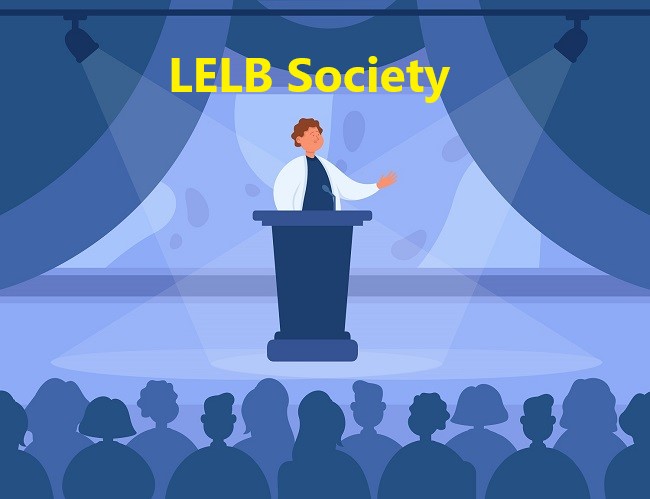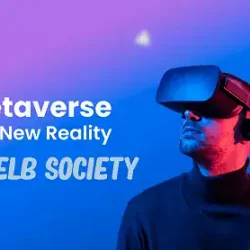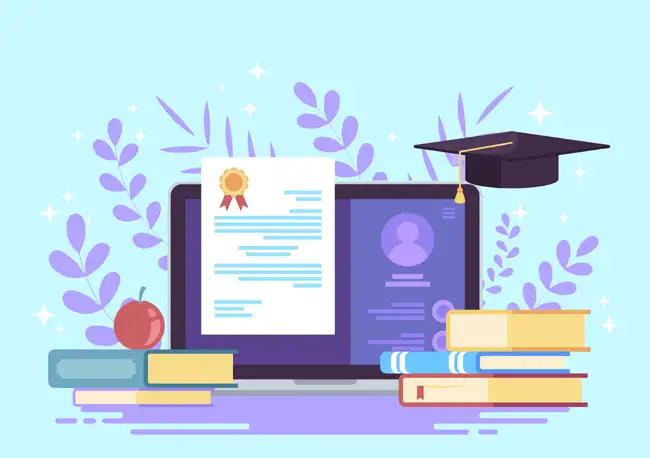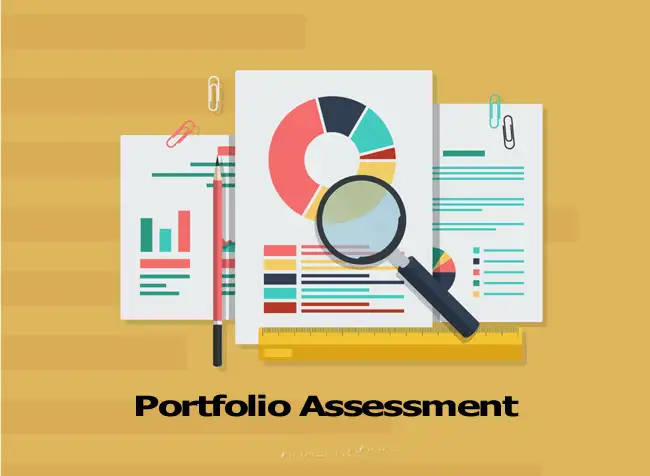Giving a presentation in English for students might be a formidable task because on the one hand, English is a second or foreign language for the student, and on the other hand, giving a presentation in your mother tongue could also be a big challenge. ESL students should improve their fluence, accuracy, and people skills in order to give successful presentations in English. In this article, you’ll learn the vital tips on impressing your audience while giving a presentation in English.
Video on presentation in English for students
What is a presentation?

A presentation is a formal speech or talk before an audience or group of attendees to describe or explain something in particular by giving facts, statistics or opinions. Unlike a conversation or conference, a presentation or lecture is a monologue in which the lecturer or presenter is the only speaker at the podium.
Why is giving presentations a good practice for students?
Giving presentations in English can help ESL students improve their English proficiency and do some research to acquire knowledge about another subject matter at the same time. Presentations can teach students how to weigh up evidence to argue or counter-argue some points or opinions.
For even a 5-minute presentation in English for students, they should study and get prepared for the speech perhaps for hours. As a matter of fact, any short presentation is like the tip of the iceberg, which is visible to the audience. Yet, the major portion of this academic activity takes a long time through data collection, organizing the information, and rehearsal.
Skill integration by giving presentations
Students as lecturers can practice the four skills naturally to prepare a presentation. For example, they first study or read some content to collect data or information for the presentation. They might also watch good English documentaries to gather some information, which can indirectly improve the lecturers’ listening comprehension.

While reading and listening, ESL students are supposed to take notes and write the script of their presentations. In so doing, the presenters can practice writing, as well. Needless to say, the ultimate language skill that is practiced is speaking because making a speech is a perfect example of a monologue.
Content-based instruction through presentations
Giving lectures in English for students on free topics could be the start of a self-discovery journey to interesting and useful subject matter. When ESL students realize that they are learning something worthwhile, e.g. time management techniques, wellbeing, emotional intelligence, and the like, they’ll develop more intrinsic motivation in second language acquisition.
However, it’s surprising to note that many teacher-dependent ESL students cannot easily select topics for their lectures. If this is the case, we encourage them to review our guest posting guidelines page at LELB Society and choose their preferable topic from the list of our recommended topics for our authors.

Content-based instruction or CBI is one of the pillars of our education system or curriculum at LELB Society. We believe in the third millennium, language learners ought to be exposed to and immersed in intriguing, exciting and useful subject matter as shown in the popular tags of our 4100+ English and Persian lessons. These lessons are restricted content on our WordPress membership site.
Give a dazzling presentation in English for students
Students should be free to choose the topic of their presentations. As a teacher, try not to impose topics on your students as lecturers because your students should have some background knowledge and interest in the topic they’re going to give a presentation about.

Presenting something successfully at the podium is actually a skill that you need to practice for perfection, so the old saying of “practice makes perfect” does apply to this skill. Therefore, if you’re an English student and you’ve not given any lecture yet, it’s quite normal not to be comfortable with this academic and useful activity.

On the other hand, if you’re an introverted person who might be suffering from social phobia, you may find this activity comparatively more challenging than extroverted people or social butterflies. To overcome this problem, you need to practice and rehearse your presentation several times before your actual performance to minimize your anxiety and boost your self-confidence.
Learn about the topic and audience of your lecture
When you accept to give a lecture on a particular topic, you’re expected to acquire as much information and knowledge as possible to make an effective speech. Don’t forget that, on some occasions, lecturers need to answer some follow-up questions after the presentation.

Don’t forget that by becoming an expert on the assigned topic, you can boost your self-confidence tremendously, and your confidence will definitely be radiated from you to your audience. However, a presentation is not just a matter of giving valuable information or opinions about the selected topic. You need to make a good impression on your audience, as well.
And about your audience, try to recognize them as much as possible, for example, their age group, academic background, the number of participants, gender (whether the majority of your audience are males or female), and so forth. Apart from your audience, you need to be aware of the context of your presentation.
To give a presentation in English for students, you need to distinguish whether your lecture will be held in a social, academic, cultural, etc. context to fine-tune the script and style of your presentation vis-à-vis the chief characteristics of its context.
Create an outline of the key points
To stay organized while making a speech, create an outline of the key points to discuss in your presentation. This outline or skeleton of your points will grant you a sense of focus, confidence and relevancy in your performance. At the time of rehearsing for your lecture, you can specify the allocated time for each item of your outline.

This technique will help you manage your time accurately as time management is a very important skill you need to master for your speech delivery. Did you know many inexperienced lecturers might cope with lack of time to put a successful end to their speech? That’s why rehearsal and timing should precisely be taken into account before the main performance.
Nonverbal communication in presentations

It’s completely wrong to equate news reporting from a teleprompter with giving a presentation in English for students. As a lecturer, try to avoid memorizing the script or reading from it like a news reporter. Conversely, you should communicate with your audience both verbally and nonverbally. According to Ralph Waldo Emerson, “the eyes of men converse as much as their tongues“.
To establish successful nonverbal communication with your audience, you need to pay attention to the following tips and try to implement them in your lecture as far as possible:
- Don’t stand motionless at the podium, reading out the script of your presentation.
- Have eye contact with all of your audience in a fair and equal manner.
- Avoid giving a monotonous speech by fluctuating your tone moderately in line with the saliency of your points
- Depending on the topic of your lecture, smile moderately and warmly at your audience.
- If possible or appropriate, try to use sense of humor in your performance.
- Learn some knowledge about kinesthetics or kinesthesis, which is the study of an individual’s conscious or unconscious body movements, such as gestures, facial expressions, postures, and so forth.
Evaluate your previous presentations
Videotape or audiotape your presentations to evaluate them on your own. If this is your first time to make a speech, don’t expect to be like a professional lecturer, e.g. on TED.com or BigThink.com. In addition, don’t be shy to ask for professional feedback from your friends, classmates, colleagues, teachers, etc. because sometimes others can assess our performance better than we can. After all, feedback is the breakfast of champions.

At LELB Society, with our lecturers’ permission, we record and archive their presentations in both English and Persian for in-depth analysis and feedback. During their monthly membership or subscription at LELB Society, our English and Persian students can give unlimited presentations. Our students can perfectly track their progress over time, thanks to portfolio assessment system that we employ in our bilingual academy.
Use visuals for a better presentation
Have you ever heard the English proverb that read: “a picture is worth a thousand words”? In spite of some exaggeration in this proverb, the significance of using some visual aids, such as tables, images, graphs, charts, diagrams, PowerPoint slides, Google Slides, etc. is undeniable. Bear in mind that your audience could listen to an audiobook instead of attending your lecture.
So, don’t act like an audiobook, and do your best to impress your audience in one way or another. We’re aware of the efficacy of visuals in education because we’re pioneer in learning vocabulary in context with images. The category of English vocabulary in context at LELB Society exceeds 2820 visualized and contextualized vocabulary items.
Check your dictionary as many times as you need
Fluency, accuracy, and pronunciation are the three pillars of your presentation when it comes to language forms. In this regard, you’re expected to check any word, phrase or sentence in your dictionary if you’re not certain about their accurate pronunciation or grammar structure. These three pillars of your presentation form are briefly explained below:
- Fluency: The way you utter words connectedly and smoothly, which requires adequate preparation
- Accuracy: Well-fromedness of your phrases and sentences from a structural or grammatical point of view
- Pronunciation: The standard articulation or enunciation of each single word or phrase in your delivery
Give presentations in English and Farsi asynchronously
In the preceding paragraphs, you read about using content-based instruction or CBI in giving presentations on interesting topics. Now, let’s talk about another critical feature of our education system at LELB Society, which is asynchronous learning. Our English and Persian students can record their presentations in either audio or video formats and send them to us for thorough and professional feedback and analysis.

Our students don’t need to attend our online classes on English and Persian to give lectures because our bilingual teachers are ready to help our students and members have the best educational experience by analyzing their essays and lectures, answering their questions in our English and Persian forums, exchanging text and voice comments and messages unlimitedly, and so forth.
Having analyzed your lectures and essays thoroughly, we’ll inform you about any possible mispronunciation, grammar mistake or any other error in your speech or essay. As a consequence, you can learn from your own errors and improve your English and Persian in the most practical way ever.
Distribute handouts among your audience
Handouts are some supplementary materials in text, graphs, charts, etc. that help your audience interact with you more easily and deeply. Although distributing handouts is not necessary in all presentations, it’s been proven to be extremely helpful, particularly for people with disabilities. Remember that disabled people might not be able to hear you, read your lips or see your face clearly.
Category of English presentations to practice speaking
At LELB Society, which is a bilingual academy of English and Farsi or Persian with 146 registered students so far (February of 2023), we have recorded and archived 70+ English lectures in the category of English presentations to practice speaking. Our students have given us this consent to record their speeches and archive them.











